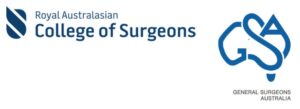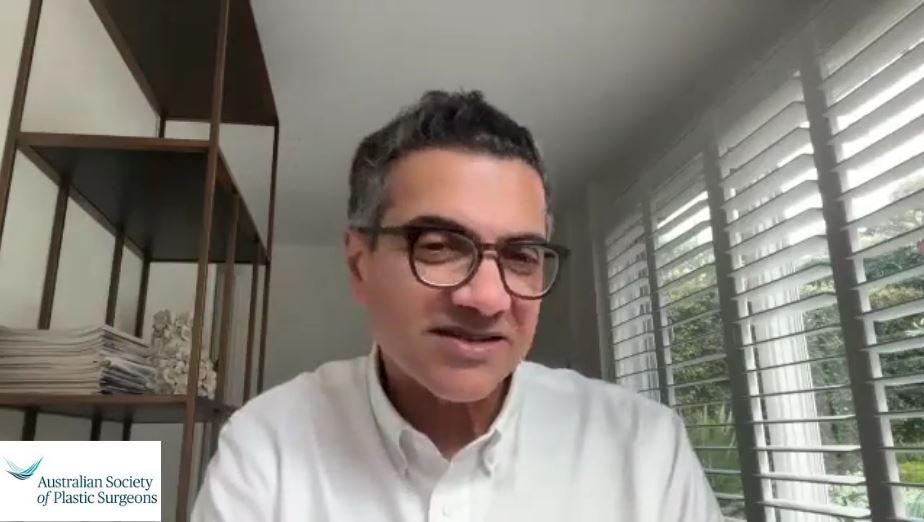Protecting Patient Safety
Australian Access to Breast Reconstruction Collaborative Group
Australian Access to Breast Reconstruction Collaborative Group

Position Statement on Access to Post-mastectomy Breast Reconstruction Information and Services in Australia
The Australian Access to Breast Reconstruction Collaborative Group (AABRCG), formed in 2020, is an initiative of BreastSurgANZ and ASPS. Its membership comprises two senior members from both peak representative surgical bodies, the director of policy and advocacy at the Breast Cancer Network Australia and a senior cancer health policy researcher.
Vision:
That all women in Australia requiring mastectomy for the management of their breast cancer have timely access to breast reconstruction regardless of geographical location or financial circumstance.
Purpose:
The purpose of this joint position statement from the Australian Access to Breast Reconstruction Collaborative Group (an initiative of BreastSurgANZ and ASPS) is threefold:
- to raise awareness of the importance of discussing options for breast reconstruction for patients with a diagnosis of breast cancer for whom mastectomy is recommended;
- to give guidance to those in a position to deliver such information; and
- to set out what minimum services should be available to women in Australia and outline optimal care.
Background:
In 2020, approximately 20,000 women in Australia will have been diagnosed with breast cancer1 and approximately 40% (8,000) of these women will have undergone mastectomy as part of their treatment.2 Cancer Australia’s Influencing Best Practice in Breast Cancer (statement 11) declares it is:
Not appropriate to perform a mastectomy without first discussing with the patient the options of immediate or delayed breast reconstruction.2
Offering breast reconstruction is promoted as the standard of care in Australia,3 the USA,4 the UK5 and much of Europe.6 If given a choice, around 50% of women will elect to undergo breast reconstruction,7 either at the same time as their mastectomy (immediate reconstruction) or sometime after their cancer treatment (delayed reconstruction).
The true national rate of breast reconstruction is unknown, with marked regional variation across Australia.8 The most recent national estimate is 18%,9 although this is an underestimate as is does not include reconstructions performed by plastic reconstructive surgeons.10 Other reasons for this low estimate relate to the lack of appropriate coding of these surgical procedures and the disparate nature of data collection. The recent review of the Medicare Benefits Schedule in relation to breast and reconstructive item numbers will assist in developing better systems for data collection in this field, but is yet to be implemented.
Breast reconstruction has been shown to have positive benefits on patients’ psychological wellbeing,11-14 without compromising breast cancer survival rates.15,16
So why do so many Australian women not have breast reconstruction?
International17,18 and Australian19,20 research has identified the importance of informed decision making about breast reconstruction around the time of diagnosis of breast cancer, with absence of informed discussion being a major barrier to more women undergoing breast reconstruction.21
Lack of informed decision making is also a major cause of breast reconstruction-related decisional regret. A systematic review found all included studies “identified a relationship between higher levels of decisional regret and an insufficient amount, inadequate quality or unclear nature of information provided to women prior to undergoing mastectomy.”22
When discussing breast reconstruction, patients need to know:
- Breast reconstruction, whether immediate or delayed, does not impact adversely on survival from breast cancer;15,16
- Patients who require post mastectomy radiotherapy should be reassured that they can safely undergo breast reconstruction;23-25
- Breast reconstruction is available through both the public and the private health systems;
- Breast cancer treatment does not need to start within days of diagnosis. Patients should be reassured that taking time to decide on the most suitable treatment plan is in their best long term interests and will minimise decisional regret.
Although in principle, breast reconstruction should be accessible to all women undergoing mastectomy, in practice there are significant barriers to accessing reconstruction.
In rural and regional locations there may be no general or plastic reconstructive surgeons with a special interest in reconstructive breast surgery. Furthermore, regional hospitals with a limited budget may not see the need to increase the scope of their services to include post-mastectomy breast reconstruction.
Even in urban centres, some of the same issues arise: public hospitals may not want to increase the scope of their services and associated costs, and private hospitals may not want to support breast reconstruction due to the “banding” of the procedures not being as lucrative as that of some other procedures, such as joint replacement.
A lack of full collaboration between surgeons performing mastectomy and those performing reconstruction has also been documented as an access barrier for women.26 The AABRCG represents a new era in improved collaboration between surgical specialties, working together in the best interests of women with breast cancer.
Finally, in some locations breast reconstruction is unreasonably expensive and in others there are unreasonable waiting times for treatment.20 Individual women may also lack sufficient money or time, and struggle in juggling competing financial, work and family priorities, which may result in them deciding against breast reconstruction. These factors also represent serious barriers for women wanting to access breast reconstruction. 27,28
Recommendations:
- All patients requiring mastectomy should have the opportunity to discuss breast reconstruction with a specialist who has an interest, appropriate training and experience in breast reconstruction, whether this be in-person or via telehealth, priorto mastectomy .
- GPs are encouraged to refer patients with breast cancer to breast surgeons who work in multi-disciplinary teams and who incorporate breast reconstruction into breast cancer treatment. A guide for GPs on breast reconstruction and oncoplastic breast conserving surgery has now been produced by this collaborative group. https://plasticsurgery.org.au/wp-content/uploads/2021/03/Final-Collaborative-GP-information-sheet-on-breast-reconstruction-December-2020.pdf
- Initial consultations about breast reconstruction should be prioritised by reconstructive surgeons, so there is no real or perceived delay in the start of treatment for breast cancer. As the Cancer Australia statement noted,2 the advantages and disadvantages of immediate versus delayed breast reconstruction must be discussed prior to surgery.
- Both autologous and implant based reconstructive techniques should be offered, and risks, benefits and costs of each explained. Patients should be given access to resources and information on breast reconstruction including financial support information.
- Patients should have access to reconstruction regardless of whether they choose to be treated in the public or private setting. Breast reconstruction is not a cosmetic procedure. No woman should decide to not pursue breast reconstruction as a result of the financial cost of reconstructive surgery.
- Transparency about costs associated with breast reconstruction in public and private settings should be mandatory, with appropriate estimates for surgery (including anaesthesia and after-care) fully disclosed in an open manner before the surgery takes place.
- Patients in regional and remote Australia, who may not have reconstructive surgeons nearby, should still have timely access to specialist consultations via telehealth to discuss breast reconstruction prior to mastectomy. Rural and remote women must not be disadvantaged over those in the city in making an informed decision and in having the surgery of their choice.
- National, state and territory health departments should work towards ensuring that breast reconstruction services are prioritised and supported in both private and public sectors, so that women do not have to travel interstate or between major cities to access these services and can access them in a timely manner. Appropriate goals for all Australian health departments are:
- An affordable reconstructive service within every MM1 (Modified Monash scale Major Metropolitan level 1) by 2025;
- No woman should have to wait longer than 12 months for delayed breast reconstruction.
Position Statement endorsed by:

References:
- Cancer Australia. Breast cancer in Australia statistics. https://breast-cancer.canceraustralia.gov.au/statistics
- Cancer Australia. Influencing best practice in breast cancer. Statement 11. https://canceraustralia.gov.au/sites/default/files/publications/influencing-best-practice-breast-cancer/pdf/statement_influencing-best-practice-in-breast-cancer.pdf
- Cancer Australia. Clinical Practice Guidelines for the Management of Early Breast Cancer (2nd edn); 2001. https://canceraustralia.gov.au/publications-and-resources/cancer-australia-publications/clinical-practice-guidelines-management-early-breast-cancer-2nd-ed
- National Comprehensive Cancer Network. NCCN Guidelines Version 3. 2013. Breast Cancer. http://www.nccn.org/professionals/physician_gls/pdf/breast.pdf
- National Institute for Health and Care Excellence (NICE). Breast Cancer (Early and Locally Advanced); February 2009. http://www.nice.org.uk/guidance/CG80
- European Society of Breast Cancer Specialists (EUSOMA). Breast Unit Guidelines. Breast Surgeons. http://www.eusoma.org/Engx/Guidelines/Guideline.aspx?cont=sub5_2
- Brennan ME, Spillane AJ. Uptake and predictors of post-mastectomy reconstruction in women with breast malignancy – Systematic review. EJSO 201; 39:527-541. http://dx.doi.org/10.1016/j.ejso.2013.02.021
- Flitcroft K, Brennan M, Costa D, Spillane A. Regional variation in immediate breast reconstruction rates in Australia. Br J Surg Open 2017; 1: 114-21. DOI: 0.1002/bjs5.19
- Flitcroft K, Brennan M, Costa D, Spillane A. Documenting patterns of access to breast reconstruction in Australia: The National Picture. Breast 2016;30:47-53. http://dx.doi.org/10.1016/j.breast.2016.08.013
- Flitcroft K, Brennan, ME, Spillane AJ. The difficulties of sourcing Australian health data: The case of breast reconstruction. ANZ J Surg 2016;86(7-8):537-539. doi: 10.1111/ans.13590
- National Clinical Audit Support Programme (NCASP). National Mastectomy and Breast Reconstruction Audit (Report 2). The Information Centre (NHS), Leeds, 2009.
- Musgrave KJ, Bochner M, Kollias J. Surgical decision-making in immediate breast reconstruction. World J Surg 2010; 4: 3029–3035.
- Corderio PG. Breast reconstruction after surgery for breast cancer. NEnglJMed2008; 359: 1590–1601.
- Howes BHL, Watson DI, Xu C, Fosh B, Canepa M, Dean MR. Quality of life following total mastectomy with and without reconstruction versus breast-conserving surgery for breast cancer: a case-controlled cohort study. J Plast Reconstr Aesthet Surg 2016; 69: 1184–1191.
- Yang X, Zhu C, Gu Y. The prognosis of breast cancer patients after mastectomy and immediate breast reconstruction: a meta-analysis. PLoS One. 2015;10(5):e0125655.
- Bezuhly M, Wang Y, Williams JG, et al. Timing of postmastectomy reconstruction does not impair breast cancer-specific survival: A population-based study. Clinical Breast Cancer. 2015;15(6):519-26.
- Jeevan R, Cromwell DA, Browne JP et al. Findings of a national comparative audit of mastectomy and breast reconstruction surgery in England. J Plast, Reconstr & Aesth Surg 2014;67: 1333-1344. http://dx.doi.org/10.1016/j.bjps.2014.04.022
- Potter S, Mills N, Cawthorn S et al. Exploring information provision in reconstructive breast surgery: A qualitative study. Breast 2015;732-738. http://dx.doi.org/10.1016/j.breast.2015.09.003
- Flitcroft K, Brennan M, Spillane A. Making decisions about breast reconstruction: A systematic review of patient-reported factors influencing choice. Qual Life Res 2017; 26(9), 2287-2319. doi: 10.1007/s11136-017-1555-z
- Flitcroft KL, Brennan ME, Spillane AJ. The impact on Australian women of lack of choice of breast reconstruction options: A qualitative study. Psycho-oncology 2019; 28(3): 547-52. https://doi.org/10.1002/pon.4974
- Wong A, Snook K, Brennan M et al. Increasing breast reconstruction rates by offering more women a choice. ANZ J Surg. 2014;84(1-2):31-6.
- Flitcroft K, Brennan M, Spillane A. Decisional regret and choice of breast reconstruction following mastectomy for breast cancer: A systematic review. Psycho-Oncology. 2018; 27:1110–20 DOI: 10.1002/pon.4585
- Jethwa KR, Kahila MM, Whitaker TJ, Harmsen WS, Corbin KS, Park SS, Yan ES, Lemaine V, Boughey JC, Mutter RW. Immediate tissue expander or implant-based breast reconstruction does not compromise the oncologic delivery of post-mastectomy radiotherapy (PMRT). Breast Cancer Res Treat 2017; 164(1):237–244.
- Steele KH, Macmillan RD, Ball GR, Akerlund M, McCulley SJ. Multicentre study of patient-reported and clinical outcomes following immediate and delayed autologous breast reconstruction and radiotherapy (ABRAR study). J Plast Reconstr Aesthet Surg 2018;71(2):185–193.
- Brennan ME, Flitcroft K, Warrier S et al. Immediate expander/reconstruction followed by post‐mastectomy radiotherapy for breast cancer: aesthetic, surgical, satisfaction and quality of life outcomes in women with high‐risk breast cancer. Breast 2016;30:59-65.
- Flitcroft K, Brennan M, Spillane A. “On the frontiers of change”: Breast surgeons’ views on demarcation between surgical sub-specialties in Australia. ANZ J Surg (Published on-line 17/12/2019). Doi: 10.1111/ans.15580
- Breast Cancer Network Australia, 2018. State of the Nation. Accessed at https://www.bcna.org.au/media/6656/sotn-report-lowres.pdf
- Breast Cancer Network Australia, 2017. The financial impact of Breast Cancer. Accessed at https://www.bcna.org.au/media/5609/the-financial-impact-of-breast-cancer.pdf
Featured Stories

ASPS say proposed changes to registration practices of SIMGs will put patients at risk
President of the Australian Society of Plastic Surgeons, Dr David…
Continue reading
